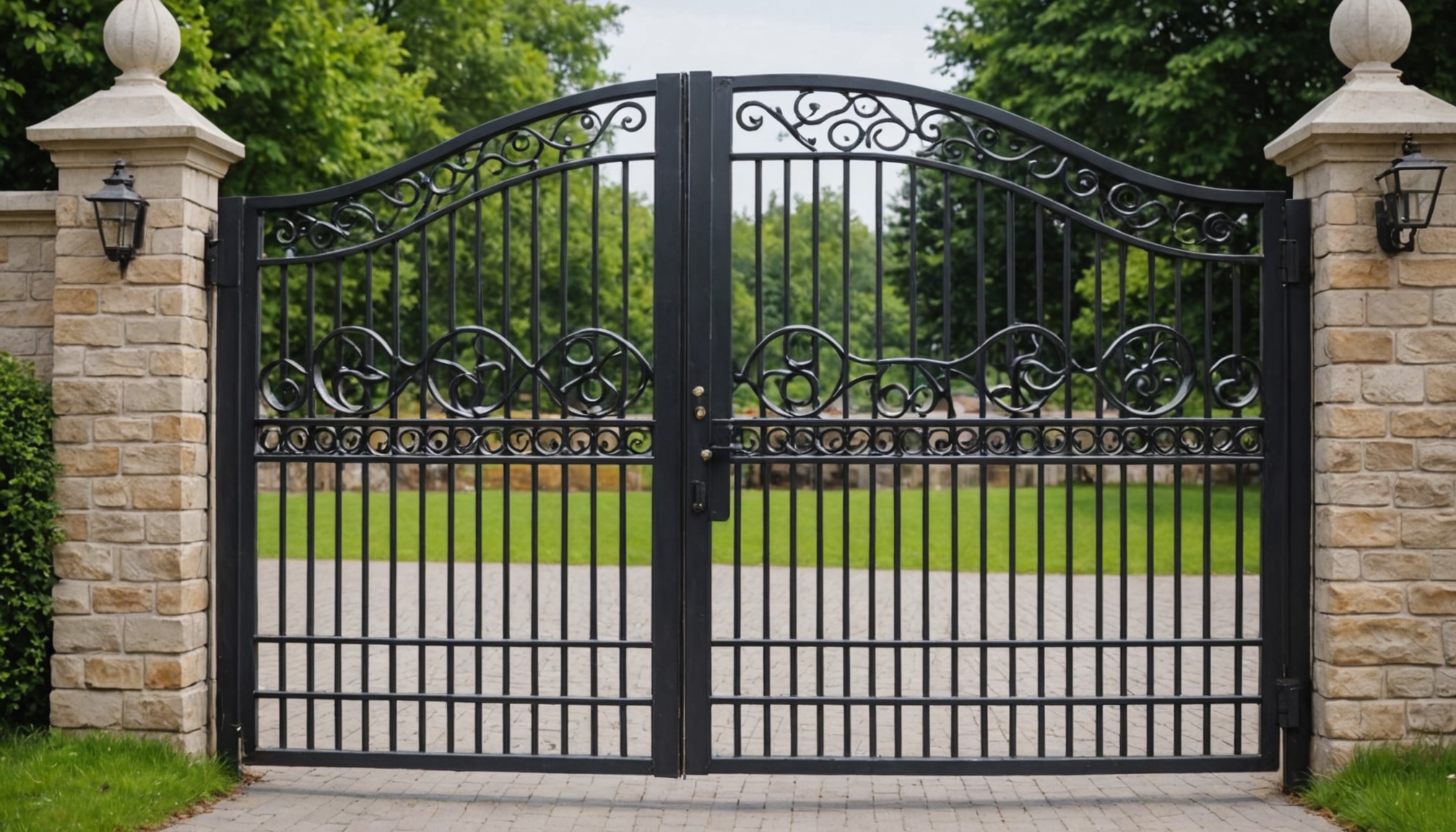Creating a steel gate without welding techniques opens a world of possibilities for DIY enthusiasts and professionals alike. Explore effective methods like bolting, riveting, and using pre-fabricated components to assemble a durable structure. This approach not only simplifies the installation process but also allows for greater design flexibility. Discover essential materials and tools, along with step-by-step guidance to ensure a strong, beautiful gate that stands the test of time.
Understanding Non-Welding Techniques for Steel Gate Manufacturing
When focusing on alternative methods to assemble steel gates, one notable approach is to create steel gate without welding, which effectively eliminates the need for high-temperature processes. This method frequently involves mechanical fasteners like bolts, rivets, and screws, which ensure sturdy joints while maintaining ease of installation. Additionally, advanced adhesives and specialized brackets make it possible to achieve both stability and aesthetic appeal without welding.
Topic to read : Boosting membership growth: innovative social media tactics for uk fitness studios to connect with potential clients
Non-welding techniques present several advantages over traditional welding. Unlike welding, which often requires skilled labor, extensive safety measures, and costly equipment, these alternative methods are more accessible for DIY enthusiasts or small-scale manufacturers. They reduce potential issues related to heat distortion of the metal and allow for adjustments or disassembly during repairs or modifications. Furthermore, maintaining coatings like powder finishes during assembly can help improve rust resistance.
Common approaches used include pre-drilled steel panels that fit seamlessly into modular frames or customizable brackets that ensure structural integrity. Whether for decorative garden gates or functional heavy-duty designs, adopting non-welding methods enables versatility, cost-efficiency, and durability suited to various project needs.
Also to see : Revitalizing visitor interaction: creative podcasting techniques for museums in the uk
Tools and Materials for Non-Welding Gate Construction
Essential Tools Required for Assembly
To construct a steel gate without welding, a carefully selected set of tools is essential for smooth and efficient assembly. Key tools include power drills with suitable bits for pre-drilled panels, screwdrivers, and metal-cutting saws for customizing pre-fabricated components. Additionally, measuring tapes and spirit levels are critical for ensuring precise alignment and dimensions during installation. Clamps aid in stabilizing components while fastening, while riveting tools can substitute where screws aren’t ideal. Don’t forget anti-corrosion sprays or coatings to protect exposed fasteners. The appropriate tools will streamline tasks like connecting steel components and ensure a solid, well-fitted structure.
Best Materials for Building Gates Without Welding
Non-welding gate designs often rely on prefabricated steel panels and durable aluminum brackets for ease of assembly and structural strength. High-quality self-tapping screws and bolts are vital for fastening. Lightweight yet strong materials, like aluminum-reinforced steel, can balance function and aesthetics. Pre-drilled panels enhance precision, while anti-corrosion-treated steel minimizes rust risks, ensuring longevity in outdoor conditions.
Recommendations for Fasteners and Hardware
Fasteners are the backbone of non-welding gate construction. Using high-tensile screws and bolts ensures secure joints. Corner brackets contribute to the gate’s structural stability, while hinges designed for heavy loads provide seamless functionality. Opt for finishes like powder coating on hardware to complement the gate design while protecting against wear and weathering.
Step-by-Step Guide to Assemble a Steel Gate Without Welding
Preparing the Design and Layout
Start by drafting a steel gate design that suits your needs. Focus on functional and aesthetic requirements, such as size, weight considerations, and durability for outdoor use. Use grid structure designs to enhance stability. Opt for pre-drilled steel gate panels or prefabricated gate components to simplify assembly. Accurate measurements are vital, particularly for gate hinges and fastener placements, as these impact structural integrity and alignment. Before beginning, inspect all materials for any damage or rust, ensuring they’re ready for use.
Assembly Techniques for Steel Gate Construction
Alternative gate fabrication methods like using bolts and screws for steel gates, brackets, and rivets eliminate the need for welding. Fasteners should be weather-resistant and properly aligned during installation. Employ tools needed for gate assembly, such as drills, clamps, and wrenches, to secure connections. Utilize steel hinges for gates strategically to balance weight and provide smooth movement. Always follow manufacturer instructions provided with prefabricated gate components for efficiency.
Tips for Ensuring Structural Integrity and Durability
To maintain structural integrity, check fastening systems innovations like self-locking nuts, which prevent loosening over time. Regularly inspect connections and apply anti-corrosion treatments for metal gates to combat rust. Use painting steel gates without welding as a protective measure. Consider weather-resistant coatings or primers to enhance longevity.











